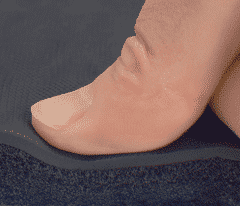 What is Ergonomics? Ergonomics is the study of designing equipment and devices that cater and conform to the human body, its movements, and the brain’s cognitive functions.
What is Ergonomics? Ergonomics is the study of designing equipment and devices that cater and conform to the human body, its movements, and the brain’s cognitive functions.
The International Ergonomics Association (IEA) defines “Ergonomics” as the scientific discipline concerned with the understanding of interactions among humans and other elements of a system, and the profession that applies theory, principles, data, and methods to design in order to optimize human well-being and overall system performance (i).
How does this and the study of Ergonomics tie into commercial floor matting? What commercial floor mats constitute as ‘ergonomic’?
Anti-Fatigue Mats are the matting industry’s Ergonomic standard that have been invented and implemented for ergonomic use. Anti-Fatigue matting is the answer to designing equipment and devices that conform to the human body, most notably the key muscles and joints used to stand upright for long periods of time: feet, ankles, knees, lower-back, and even neck and shoulders. Comprised of a soft, forgiving, foam and urethane based cushion, anti-fatigue mats are constructed using anywhere from 1/2” to over 1” of ergonomic cushion beneath the surface of the mat. This displaces the weight of the person or object placed atop the mat while providing a small spring, or bounce in ones step, in addition to relieving ones joint pain and fatigue.
Pain relief is $30 Billion a year industry in America alone. Between pain relieving devices, beds, pain relieving drugs, physical therapy and doctor visits, its no wonder why ergonomic study has further ventured into the commercial floor mat industry and the thousands of people who stand on and need the use of anti-fatigue mats. A recent study shows that 62% of Americans, aged 18-45 both male and female polled this year, have noted and complained of at least one form of continuous or frequent back pain and joint pain. That is over half of all Americans in that demographic, which does not even account for much of the baby-boomer population and the elderly who make up $22B of that $30 Billion spent each year. These astronomical numbers and the amount of people affected by chronic pain and fatigue have funded research and spurred interest in companies looking to combat this phenomena.
Anti-Fatigue Mats are used frequently in such applications as factories, manufacturing plants, construction zones, banks, pharmacies, hotel and hospitality management, and even restaurants and restaurant kitchens, where people are standing for long hours at a time. Anti-fatigue mats offer businesses a sensible solution that increases both employee moral and productivity. Postal facilities, restaurants, banks, and other commercial workplaces rely on employees to deliver goods and services of exceptional quality. It is the very “backbone” if you will, of our economy. These businesses invest heavily in anti-fatigue matting to keep employee areas clean, dry, and comfortable throughout long business hours. Recent studies have shown that the use of anti-fatigue matting have increased both worker moral and energy levels by 50% as compared to employees in similar jobs and applications not using anti-fatigue mats. In addition, approximately 25% of those same workers polled using the ergonomic anti-fatigue matting reported a higher satisfaction rate of their job and day-to-day responsibilities.
There is no question, that the high stress and fast pace expectations of the American public put a harsh toll on the very minds and bodies who keep the American economy and culture so strong, in good times and bad.
Anti-Fatigue matting and ergonomic floor mats are scientifically proven to help relieve this stress, increase energy, and provide an overall healthier working environment for both the producer and consumer.
(i) International Ergonomics Association. What is Ergonomics. Website. Retrieved 6 December 2010.






